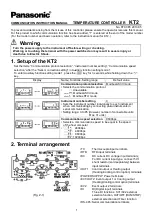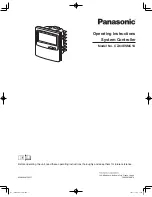
Geophysical Survey Systems, Inc.
SIR® 30
Manual
MN 93-101 Rev E
45
SIGNAL PROCESS > FIR FILTERS
FIR stands for Finite Impulse Response filter. This class of filters has an impulse response of finite
duration, very good amplitude response and a linear phase response. They operate in a manner similar to
the IIR filters however, they do not introduce phase shifts in the signal. GSSI generally recommends the
use of FIR filters as opposed to IIR filters with the exception of the High Pass IIR filter.
LOW PASS FIR:
This is a vertical filter. The value is expressed in frequency (MHz). A low pass filter will
pass everything lower than the specified value so this number should always be higher than the center
frequency of the antenna. The purpose of the low pass filter is to remove high frequency noise in the data.
Common values are 2 times the antenna’s center frequency e.g. 800 MHz for a 400 MHz antenna.
HIGH PASS FIR:
This is a vertical filter. The value is expressed in frequency (MHz). A high pass filter
will pass everything higher than the specified value so this number should always be lower than the center
frequency of the antenna. The purpose of a high pass filter is to remove unwanted low frequency noise.
Common values are 1/4 or 1/3 the antenna’s center frequency e.g. 100 MHz for a 400 MHz antenna.
CUSTOM FILTER:
This is a custom vertical filter used with GSSI Horn antennas with the NR (Noise
Reducing) designation. This filter is applied to the signal before all of the other filters. All vertical filters,
except the High Pass IIR filter should be disabled when using a horn antenna with a custom NR filter. The
User should consult their horn antenna manual for instructions on how to use the custom filter creation
tool. The User must copy the *.CSV Custom filter file into the FILTER folder on the SIR 30 or use the
SIR30 MaintenanceTool. The FILTER folder is located on the SIR 30 server under:
\GSSI\SIR30\FILTERS.
Figure 66: Custom Filter folder location.
To apply the filter, make sure that you have specified the serial number of the antenna in the Antenna
channel description in the System Settings menu.
Summary of Contents for SIR 30
Page 1: ......
Page 4: ...Geophysical Survey Systems Inc SIR 30 Manual ...
Page 6: ......
Page 90: ...Geophysical Survey Systems Inc SIR 30 Manual MN 93 101 Rev E 84 ...
Page 102: ...Geophysical Survey Systems Inc SIR 30 Manual MN 93 101 Rev E 96 ...
Page 120: ...Geophysical Survey Systems Inc SIR 30 Manual MN 93 101 Rev E 114 ...
Page 122: ...Geophysical Survey Systems Inc SIR 30 Manual MN 93 101 Rev E 116 ...
Page 148: ...Geophysical Survey Systems Inc SIR 30 Manual MN 93 101 Rev E 142 ...















































